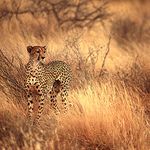- Home
- Lightroom Classic
- Discussions
- Re: LrC - Frage zu optimalen Export von entwickelt...
- Re: LrC - Frage zu optimalen Export von entwickelt...
LrC - Frage zu optimalen Export von entwickelten Fotos
Copy link to clipboard
Copied
Hallo!
Ich finde keinen optimalen Workflow für meine Foto-Verarbeitung. Bin erst voriges Jahr auf MacBook und LrC umgestiegen. Kurz die Ausgangslage in Stichworten:
Habe von unserer letzten Italien-Rundreise ca. 800 Fotos mitgebracht. Ca. 500 als NEF, ca. 300 als JPG von unseren iPhones und meiner DJI Pocket 2.
Alle Fotos aussortiert, umbenannt und ca. 500 Fotos in LrC importiert. Dann in LrC entwickelt. Bei ca. 300 Fotos habe ich im Entwicklungsmodul eingegriffen, bei ca. 200 Fotos war kein Eingriff erforderlich (also Originalaufnahme)
Solange ich die Fotos in LrC betrachte, sehe ich immer die finale Version der Fotos - also entweder entwickelt oder original. Alles klar. Möchte ich die Fotos allerdings für eine Diashow (Video) verwenden oder an eine andere Person weitergeben, muss ich die entwickelten Fotos natürlich zuvor exportieren.
Fragen:
- in LrC gibt es jetzt Filter für "Bearbeitete/Nicht bearbeitete" und "Exportierte/Nicht exportierte" Fotos. Ok. Somit kann ich alle bearbeiteten Fotos markieren und in einen beliebigen Ordner - z.B. "Diashow" - exportieren. Aber wie mache ich das mit jenen Fotos, die nicht bearbeitet wurden? Soll ich die auch exportieren? Oder muss ich mir diese "originalen", unbearbeiteten Fotos manuell auf der SSD raussuchen und manuell in den Ordner "Diashow" kopieren? Im Ordner "Diashow" benötige ich jedenfalls ALLE Fotos dieses Urlaubs - also ALLE unveränderten und alle bearbeiteten Fotos...
Vielleicht stehe ich nur auf der Leitung - bin für jeden Tipp dankbar.
lg, Peter.
Copy link to clipboard
Copied
Export all photos, also the unedited ones. For JPEGs you could use the original, but it will be easier to export them too, and it allows you to resize the photos for the slideshow. For raw files you will always have to export them, because even an 'unedited' raw file will actually be edited (it must always be demosaiced and converted to an RGB file before you can use it in a slideshow).
Copy link to clipboard
Copied
Danke für den Tipp - ich denke auch, dass das Exportieren ALLER Fotos am Ende der Entwicklung den geringsten Aufwand bedeutet. Dadurch werden zwar unbearbeitete JPG's noch einmal unnötig komprimiert, aber das sollte die Qualität nicht erkennbar beeinflussen.
Seit vielen Jahren und aus meiner Windows-/ACDSee-Zeit habe ich meine Fotosammlung nach folgendem Muster aufgebaut:
Datum Urlaub Italien (Hauptordner)
RAW (Unterordner, dort habe ich die RAW-Dateien abgelegt)
Originals (Unterordner, dort legt ACDSee Kopien der Original-Fotos an, die von ACDSee entwickelt wurden)
Foto 1 (Entwickelt)
Foto 2 (Nicht entwickelt, Originalfoto)
Foto 3 (Entwickelt)
Foto 4 (NIcht entwickelt, Originalfoto)
...
Am Ende des Bearbeitungsprozesses hatte ich alle entwickelten UND nicht entwickelten Fotos im Hauptordner. Den Hauptordner konnte ich dann mühelos in iMovie importieren und eine Diashow (4K UHD) erstellen oder einer anderen Person auf einen USB-Stick übertragen.
Diese Struktur ist in LrC weder sinnvoll noch notwendig. Wenn ich eure Tipps richtig verstehe, sollte ich ALLE Fotos (NEF's und JPG's) in den Hauptordner "Datum Urlaub Italien" importieren, dort bearbeiten und bei Bedarf den gesamten Ordner mit allen Fotos exportieren.
Copy link to clipboard
Copied
Consider using Folders for organizing your storage system. For Lightroom "Slideshows" consider using Collections. If you are going to pass image files to another external program, you can export them from a Collection in a batch.
Another way might be to use Keywords for your organization.
Copy link to clipboard
Copied
Danke für den Tipp mit der Sammlung 🙂
Stichwörter verwende ich ohenhin.
Copy link to clipboard
Copied
ich habe probleme beim exportieren - beim export kommen komische markierungen in jpegs.
früher war es nicht so, nur als adobe ki eingefürt hat.
schauen sie bitte meine bilder, die ich nur an helligkeit und kontrast bearbeitet habe.



